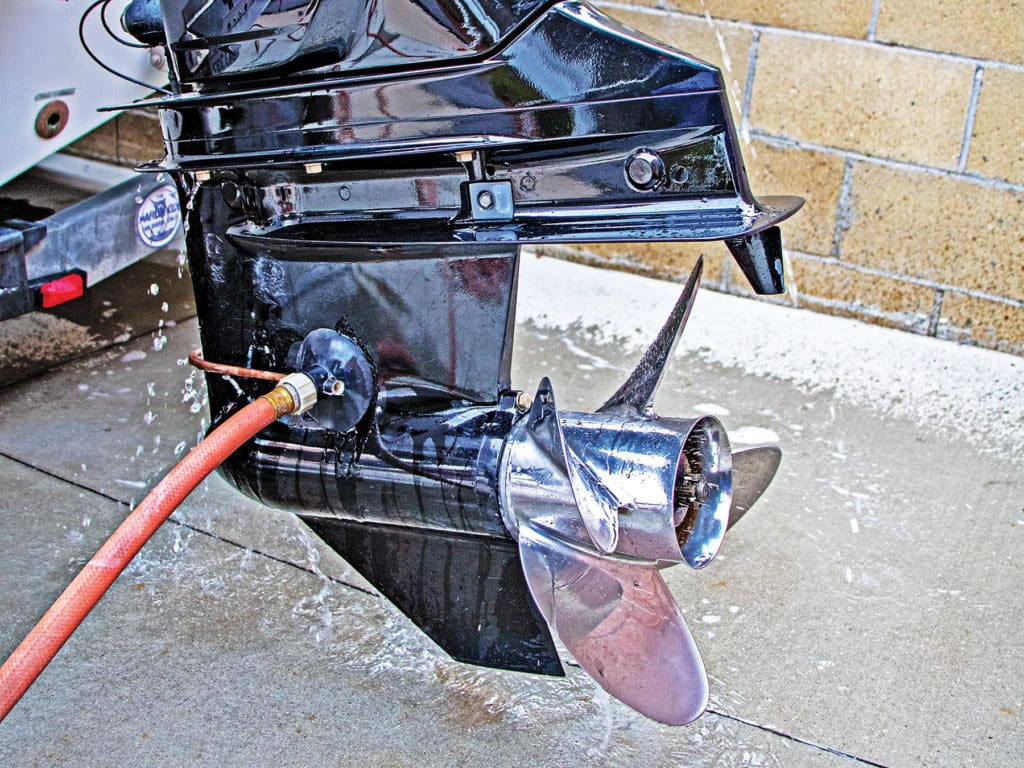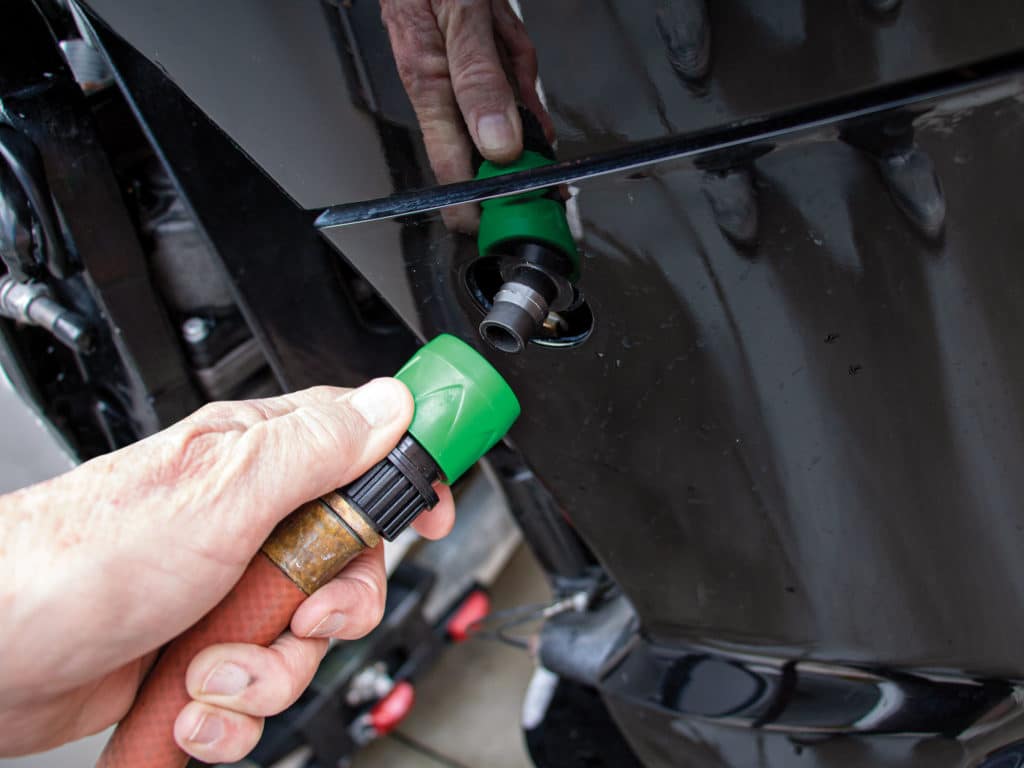
The need for marine engines to run on a clean source of fresh water is common. Saltwater boaters should regularly flush their engines with fresh water to stave off internal corrosion. Also, the ability to run the engine in the driveway or elsewhere on land is handy for repair and service such as winterization. Check out these tips on flushing and running your marine engine, whether it is in the water or out.
Inboards and Sterndrives
Inboard engines usually have a through-hull cooling-water pickup, as do some sterndrive engines (even if your boat’s engine is freshwater-cooled, aka closed-cooled). A grate or strainer often covers this intake.
One way to connect the through-hull cooling-water pickup to a hose is to attach the cup of a plunger—a plumber’s helper—to a hose by drilling out the handle recess and replacing the handle with a section of pipe of the right diameter. The cup presses up against the hull intake, the hose connects to the pipe, the water turns on, and the engine starts. Make sure water begins coming out of the exhaust within a minute or so. If it does not, shut down the engine and look for a blockage.
Another way to flush an engine with a through-hull intake is to disconnect the intake hose on the inside and connect that to a hose. Perko, Groco and other makers offer special permanent flushing valves you can add to allow attaching a hose for quick and easy flushing without needing tools.
Read Next: Prevent Engine Overheating With Proper Maintenance

Outboards and Sterndrives
Outboards and most sterndrive engines feature cooling-water intakes on the gear case—the lower unit—typically located on the side of the case, and sometimes on the gear-case torpedo (to allow for higher mounting and trim angles without losing cooling water). For these, a motor flusher typically is used. I recommend the more costly type that allows water to flow into both sides of the muffs.
To flush your engine with a motor flusher, push the flusher on from the front of the gear case, ensuring the cups cover the intake grates. The frame of the flusher acts like a spring to hold it in place. If your engine or drive has low-water pickups, tape these closed with duct tape during the flushing so the engine does not suck in air. Turn on the water to medium high and start the engine. If water does not discharge through the exhaust or telltale after a minute, shut down and look for a blockage.









